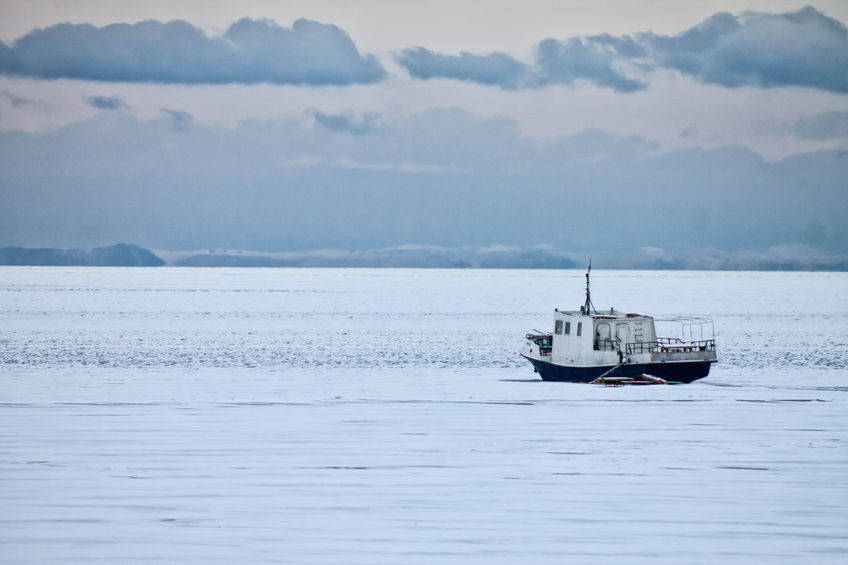When winter’s first cold snap turns my fishing town into a frosty icebox, there’s a lively glee in my house. Why? It means everyone in my family gets to lace up ice skates and venture into a beautiful winter world. Here in Cordova, long after our fishing boats are laid up and nets are stowed away, all that water transforms into an endless string of ice rinks. You could skate all day on the Copper River Delta and never cross your tracks.
What my kids love about these outings are the surprises. Even when everything’s frozen and sparkling with frost, there’s a lot of life. You can see tracks in the ice: wolf, moose and mink. Through the clear ice, you might find the unmistakably huge white feather of a trumpeter swan. And then there’s the ultimate showstopper: whenever we come upon a school of two-inch-long salmon smolt through the ice, all skating stops.
These little salmon show up in what, to many of us, are surprising places.
As a young commercial fisherman who’s always preparing for the next season, I see something else when I look through the winter ice at those little salmon smolt: I can’t help but see shiny nickels. Sure, these fish are a natural wonder, but they’re also the basis of livelihoods like mine.
And for reasons of wonder and bottom lines, I’m proud that almost 50,000 of my fellow Alaskans from every corner of the state have signed on to qualify the Stand for Salmon initiative for the ballot. They all know that protecting habitat with clear development rules is an important issue for the state to take on right now. Before we vote, there will be one more chance for the Legislature, led by forward-looking leaders such as Rep. Louise Stutes and House Speaker Bryce Edgmon, to reform habitat protections.
Before I was a commercial fisherman, I was a fisheries biologist. I spent a lot of time wading Alaska’s salmon streams, catching salmon smolt to measure the success of restoration projects. My scientific training means the wonder of the salmon life cycle will always be imprinted on my brain. I know these fish and their place in nature.
Now I share the salmon life cycle with my own children and I’ve found a lot of joy in watching their sense of wonder. Because salmon are all around us, all year long, teachable moments are always in season.
In the halls of my town’s elementary school, salmon art hangs on the walls. On the lunch menu: salmon. And commercial salmon fishing pays the bills for a lot of students’ families.
Commercial fishing isn’t the only way people and salmon are connected in Alaska, but it’s one important connection that we need to be thinking about for the future.
I’m focused on seven-pound sockeyes in the net. But I know where they come from: places that surprise us. As we look to Alaska’s future, we need to take care of the little places that have a big effect on our state’s salmon runs. That’s why I’m taking a stand and supporting the Stand for Salmon in Alaska. It’s time for clear rules about how habitat should be protected during development projects. I want my kids, and the kids in their school, to know the salmon will always be here for them — whether they’re at the helm of a commercial fishing boat or peering through the ice on a winter’s day.
Brad Reynolds is a commercial fishing permit holder who lives with his family in Cordova, Alaska.

